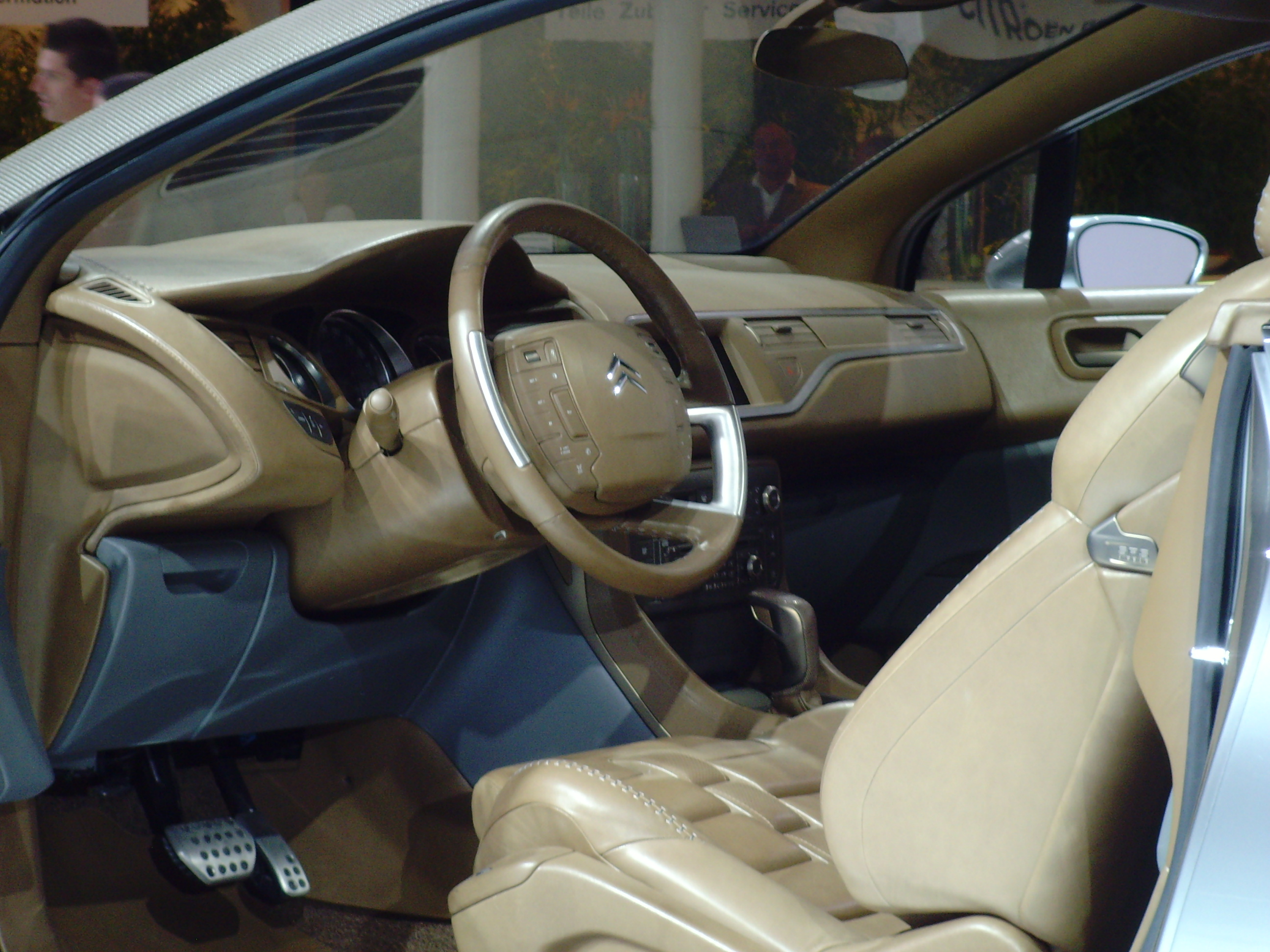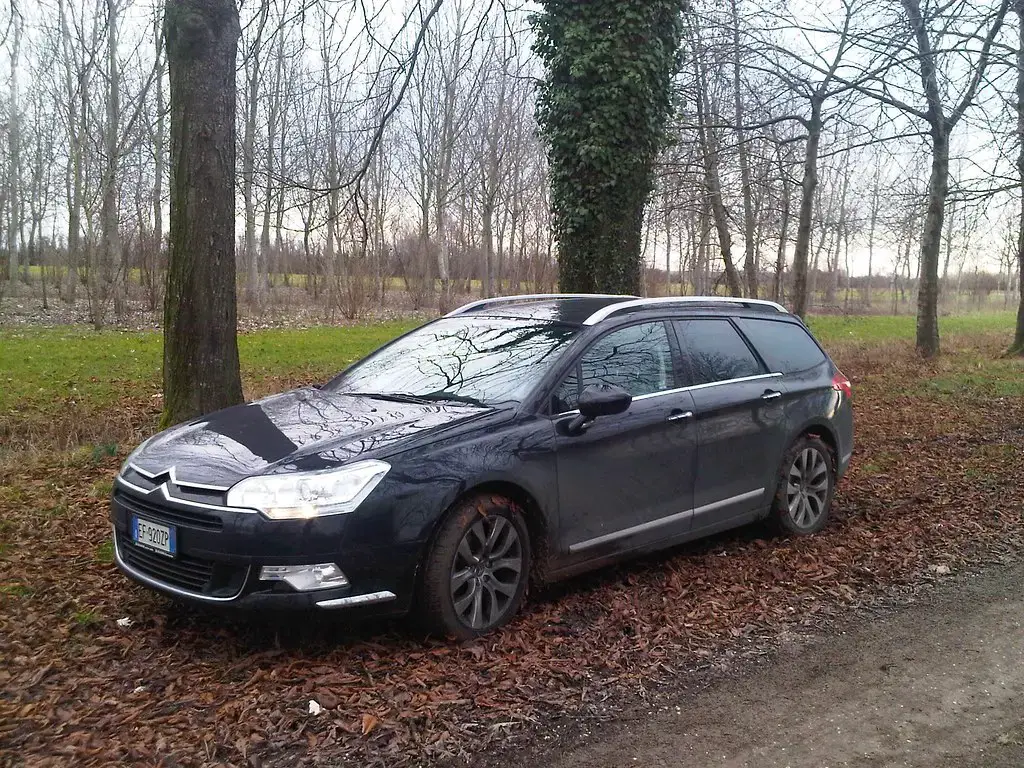Review: Citroen C5 RD (2008 – 2013)

The Citroen C5 RD, the last Citroen built using to the proper Citroen recipe. Is this a good thing or not? We’ll find out in today’s review. Citroen C5 RD, the official car of “second time’s a charm”.
Launched in 2008 to replace the original Citroen C5, the Citroen C5 already comes with a teutonic approach to the issue. With more flaws than a former minister of justice and a stubbornness to use technology from 1955 (the hydropneumatic suspension), Citroen sales have dropped like a sack of potatoes. This meant that the baguette-eaters had to understand that they shouldn’t build what they like but what sells. This is a basic rule in business, how these Citroen folks managed to survive on the market for so long without knowing this baisc principle, baffles.
What’s new about the Citroen C5 RD?
- You still get some typical Citroen creativity in the sense that the central section of the steering wheel remains fixed, where all the buttons and airbag are located, yet somehow the wheel spins.
- As a novelty, the hydropneumatic suspension on Citroen is no longer standard for all models. The folks at Citroen realized after 50 years that such technology is indeed impressive but also expensive to produce and maintain. So standard models come with a standard coil suspension, for more reasonable running costs cost.

Citroen C5 RD Engines
Petrol
- 1.6 EP6 of 120 horsepower – It’s not quite as bad as other 1.6 naturally aspirated petrols from the competition, but that engine was at least put on entry-level cars, and the Citroen C5 RD aims to be the flagship of Citroen. And as a bonus, you get water pump issues that fail and overheat the engine, and if the timing chain isn’t changed on time, it fails. In both scenarios, you’re left without an engine.
- 1.6 THP EP6 of 156 horsepower – The same 1.6 but now it gets a turbocharger. A pretty good engine, by French standards. It’s like getting the highest grade on a retake exam. It’s like getting a 4.99 on an exam. You have the highest grade among those who failed. Watch out for timing failures.
- 1.8 EW7 of 125 horsepower – The same 1.6 that has been stretched to 1.8 and has even received 5 extra horsepower. If it were 6, they would be nice, but they’re not. Those 5 extra horses aren’t worth the 5 pounds difference in taxes and insurance.
- 2.0 EW10 of 140 horsepower – A simple engine that does its job admirably. It pulls decently even the body of the Citroen C5 RD. But we live in Europe and we’re not interested in non-diesel engines.
- 3.0 V6 ES9 of 211 horsepower – The same engine from the first generation of the Citroen C5 and made famous especially on the Clio V6. A spectacular engine, with running costs to to match. But it doesn’t fit the limousine character of the Citroen C5 RD.
Diesel
- 1.6 HDi DV6 of 109 horsepower – The same miserable 1.6 HDi with which we’ve gotten used to so far. A mechanical failure filled with issues with the turbo, turbo actuator, turbo oil filter, turbo itself, injectors, EGR, particle filter, and just about any mechanical part of the engine. If the saying “I wish all the unhappiness and issues in the world to fall upon you” applied, it would apply to this engine.
- 2.0 HDi DW10 of 136, 140, and 161 horsepower – Like any other 2.0 European diesel, there are issues with the EGR and particle filter. An engine that doesn’t stand out in any way, which is very strange for a Citroen.
- 2.2 HDi DW12 of 170 and 200 horsepower – An absolutely fantastic engine, the 170 horsepower 2.2 HDi comes with a single turbocharger and legendary reliability. Used on Citroen C5, Peugeot 406, and Land Rover Freelander, this is one of the most reliable engines in recent history.
- 2.7 HDi V6 Bi-Turbo DT17 of 211 horsepower – Now we’re talking. A generally reliable engine, but when something breaks, prepare yourself spiritually, mentally, and physically. It’s not the fastest engine possible, but it can definitely tow another Citroen on the platform en route to the workshop.
- 3.0 HDi V6 DT20 of 240 horsepower – The same 2.7 HDi just a bit bigger, which worked a bit harder, which learned a bit more in school. But does a 3.0 V6 deserve a place under the bonnet of a Citroen C5? Plus, the engine weighs almost as much as pre-workout John Goodman, and will understeer in a style worthy of an Audi.

Citroen C5 RD Reliability Issues
- The hydropneumatic suspension is no longer standard. However, for those Citroen C5 models that have this suspension, you’ll need to prepare a few thousand pounds just in case.
- Now here’s a big one, like when you’ve eaten Indian fast food. The electrical system uses a CAN bus instead of classic wires because Citroen. When something breaks on the electrical side, guaranteed something else will break too until everything breaks if you ignore it long enough. That’s why it’s important to check absolutely all the electronics in the car and see if each button works.

Citroen C5 RD Verdict
You can feel the teutonic influence on the Citroen C5 RD. It’s no longer a quirky car that breaks down every 200 meters, now it’s just another car on the street. On one hand, it’s much more reliable, on the other hand, it’s nothing special anymore. Basically a slightly cheaper, slightly more reliable, and slightly more attractive Passat B6. But it should have competed with the Passat B7, but it could only compete up to the B6 level. Anyway, if you go for the standard suspension, a 2.0 diesel and a manual gearbox, you get a decent car. Anything else may turn into an almost car.
Which engine do I recommend? The 2.0 HDi with 140 horsepower, mated to a manual gearbox sitting on springs. It’s a decent saloon in terms of reliability, economy, and performance, and due to Citroen’s bad reputation, it’s even cheaper than the competition, even though it’s almost as good.
Similar Articles

Review : Toyota Verso AR20 ( 2009 – 2013 )

Review : Skoda CitiGO ( 2011 - 2020 )

Review : Seat Mii ( 2011 - 2020 )
Write an answer
- Review : Toyota Verso AR20 ( 2009 – 2013 ) 10 November 2025
- Review : Skoda CitiGO ( 2011 - 2020 ) 02 August 2025
- Review : Seat Mii ( 2011 - 2020 ) 02 August 2025
- December 2025
- November 2025
- October 2025
- August 2025
- July 2025
- April 2025
- March 2025
- February 2025
- January 2025
- December 2024
- November 2024
- October 2024
- August 2024
- July 2024
- June 2024
- May 2024
- April 2024
- March 2024
- February 2024
- January 2024
- December 2023
- November 2023
- October 2023
- September 2023
- August 2023
- July 2023
- June 2023
- May 2023
- April 2023
- March 2023
- February 2023
- January 2023
- December 2022
- November 2022
- October 2022
- September 2022
- August 2022
- July 2022
- June 2022
- May 2022
- March 2022
- April 2021
- January 2021
- December 2020
- November 2020
- October 2020
- September 2020
- August 2020
- July 2020
- March 2020